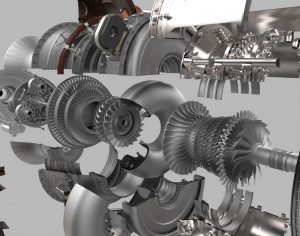
Photo Courtesy of GE Aviation
Textron Aviation recently announced their new Cessna Denali business aircraft at the EAA AirVentures airshow in Oshkosh, Wisconsin. The plane is designed to offer all the comforts and conveniences of a private jet, but at a fraction of the manufacturing price, thanks in part to its turboprop engine.
General Electric Aviation, which developed the advanced turboprop (ATP) for the Denali, included a few novel features in the engine to make the aircraft as jet-like as possible. For one thing, a number of the components on the turboprop will be 3D-printed from titanium and steel, eliminating the need to manufacture hundreds of smaller parts. It’s tech that GE has been diving into headfirst, and this is one of its first major applications. Full Authority Digital Engine Control (FADEC) will integrate the engine and propeller control into a single lever, giving the pilot aircraft controls that operate more like a jet than a turboprop.
The new turboprop also leverages some traditional jet-engine technology to increase the pressure and temperature in the compressor, which helps the engine provide a massive 1,240 shaft horsepower—all while burning 20 percent less fuel than other engines in the same class. Carbon composite propellers with reversible pitch and ice protection will help the Denali perform short landings and fly in cold conditions, and a 1,600-nautical-mile range means the Denali has plenty in the tank to fly from New York to Miami.
This article originally posted on PopularMechanics.com.






